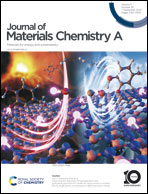How flat is the flatband potential?†
Abstract
The development of semiconductor devices requires extensive effort dedicated to the interface characterizations. However, these measurements can be affected by defects. As a consequence, the experimental results can fall off from theoretical consideration, e.g. the electron affinity rule, and the interpretation and the manipulation of quantities such as the flatband potential (Vfb), the built-in voltage (Vbi) and the thermionic voltage (Vth) can be confusing. This article highlights that these issues can be solved in considering the surface potential (Vsurf.) relationship with the bulk potential (Vbulk), i.e. the space charge region (SCR). The findings are based on results obtained on Si/SiO2 interfaces by photoelectron spectroscopy (PES) and electrical measurements suggesting a defect-induced volt range Vsurf. drop within few nanometers. This can lead to the measurements of negative Vfb and dispersive Vfb values over several volts. Finally, the interpretation of the experimental data shows that the Vfb corresponds to a maximum drop in Vsurf. for a flat Vbulk in the presence of shallow interfacial defects in the semiconductor bandgap. The outcomes of this article can provide valuable inputs in the manipulation of the abovementioned quantities while it is proposed to include a defect-driven Vsurf. term in the electron affinity rules to account for the observed experimental deviations.



 Please wait while we load your content...
Please wait while we load your content...